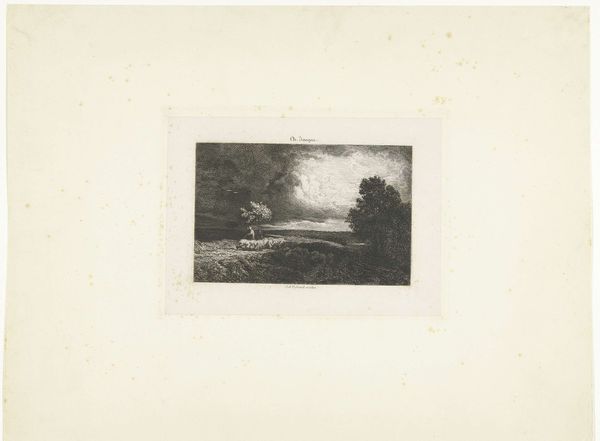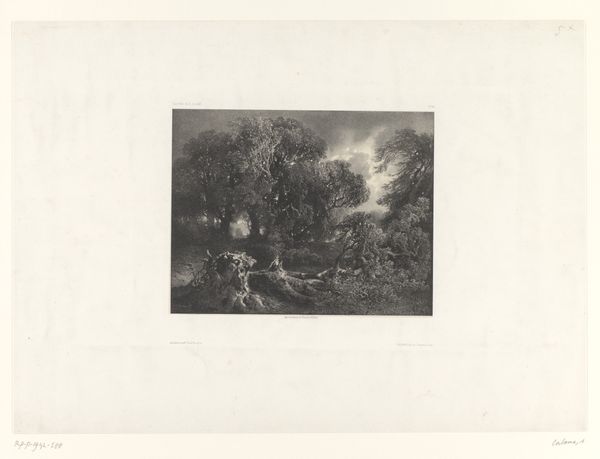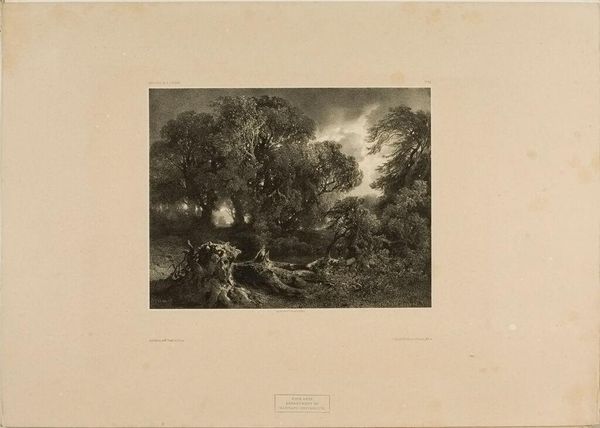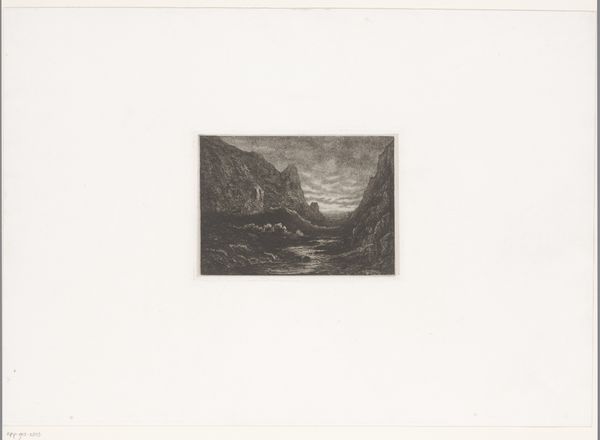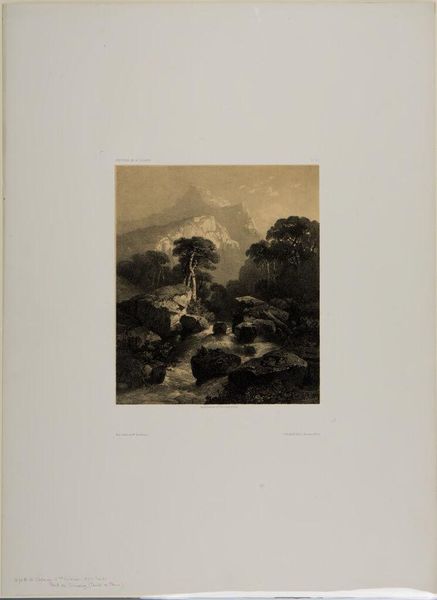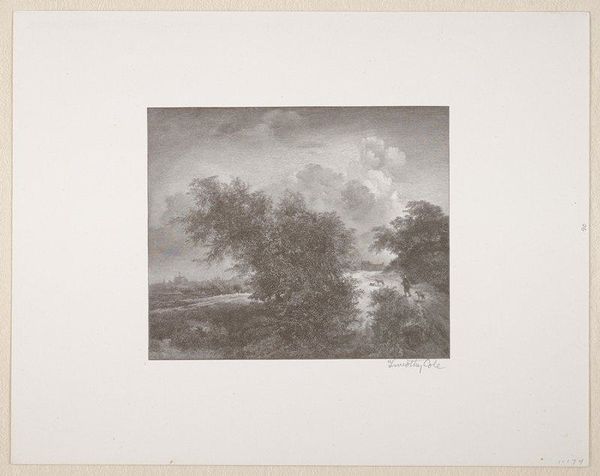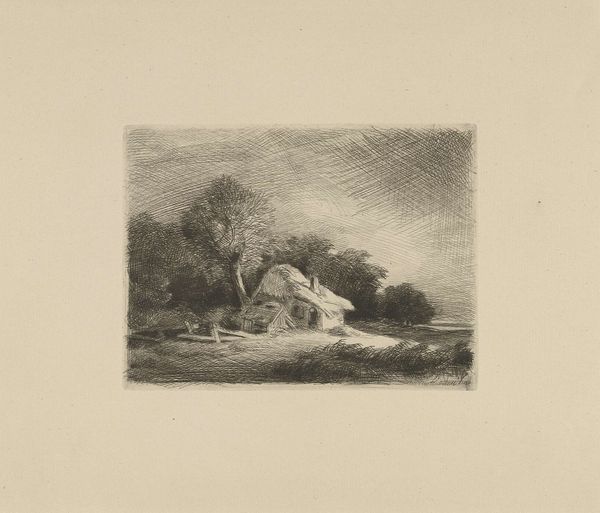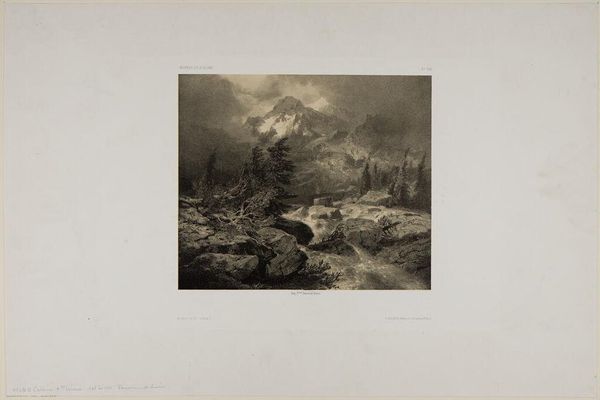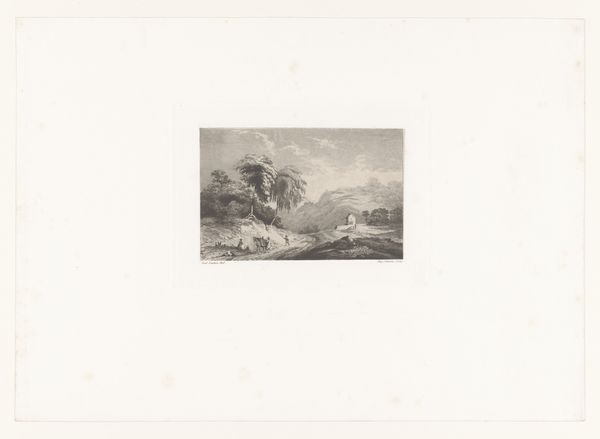
print, woodcut, wood-engraving
# print
#
landscape
#
woodcut
#
wood-engraving
#
realism
Dimensions: 6 5/8 x 5 1/4 in. (16.83 x 13.34 cm) (image)9 1/16 x 11 1/2 in. (23.02 x 29.21 cm) (sheet)
Copyright: No Copyright - United States
Curator: Here we have "The Watering Place," a wood-engraving created by Timothy Cole in 1897. It is currently held in the collection of the Minneapolis Institute of Art. Editor: It strikes me immediately as somber. The tonal range is so limited. It seems entirely composed of dark shades; a nearly monochromatic study in values, with subtle gradations to suggest form and depth. Curator: Cole was renowned for his skill in translating paintings into print. Think about what this image tells us about agrarian life at the turn of the century. The animals are at the heart of survival for the farmer; they are rendered with great care. Editor: Note how the limited light shapes the composition. The cluster of cows becomes the focal point, framed by the darkness. It reminds us of the inherent constraints Cole faced with the printmaking process, a sort of self-imposed challenge in capturing light effects. Curator: Exactly. In many rural communities, shared watering places served as vital social spaces. Beyond mere sustenance, these sites offered women opportunities for exchange. Editor: I would say this artwork’s strength lies in its simplicity. The forms are reductive, yet completely suggestive. It captures the essence of light. Curator: It also speaks to the socio-economic realities of its time. The connection between humanity and the environment is placed center stage, illustrating the relationship in providing nourishment. Editor: You know, while I can see those elements, I keep coming back to the visual language itself. The careful use of light and shadow create an emotive narrative completely separate from the literal one you have proposed. Curator: So, we've circled back, and ultimately found divergent entry points of aesthetic appreciation informed by our unique methodologies of interpretation. Editor: Indeed, finding harmony between disparate methodologies fosters new and transformative knowledge production and comprehension.
Comments
No comments
Be the first to comment and join the conversation on the ultimate creative platform.
